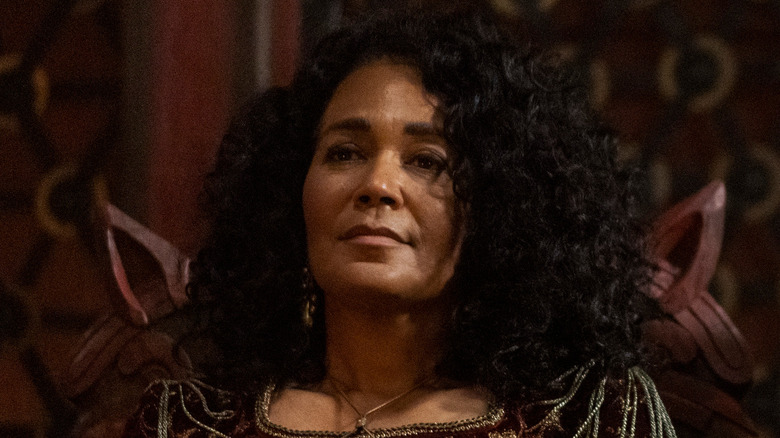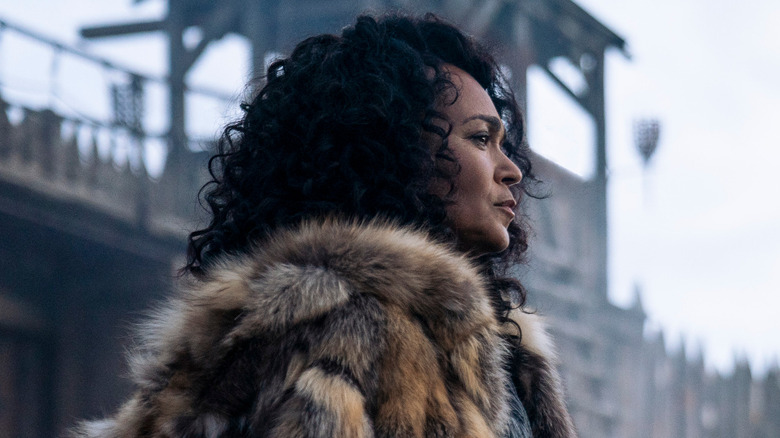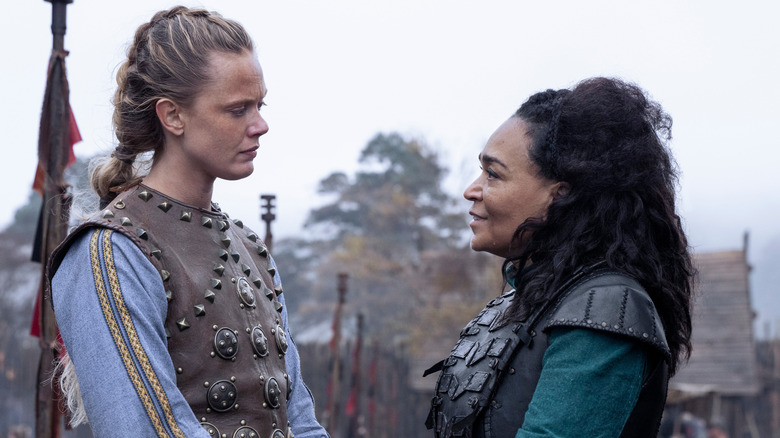The Truth About Vikings: Valhalla's Jarl Haakon
In Netflix's new expansion of the world of "Vikings," the sequel show "Vikings: Valhalla," we are quickly introduced to a fresh group of heroes, villains, and heavily bearded individuals that all play their part in a critical chapter of history. One integral piece of this fictionalized take on the closing chapters of Viking Age is the conspicuously beardless and all-around badass ruler of Kattegat, Jarl Estrid Haakon, played by the enigmatic and awesome Caroline Henderson, a native of Denmark.
Haakon is a model leader and teacher to another one of our new principals, Freydis Eiriksdottir (Frida Gustavsson), a courageous young woman on her own journey of self-actualization in the 11th century. You can think of it as "Eat, Pray, Pillage." But just how much of Jarl Haakon's story is based on fact, and does the now-Kingdom of Kattegat actually reflect the realities of medieval Scandinavian life? As it turns out, even the most seemingly anachronistic aspects of Haakon's rule as depicted in "Vikings: Valhalla" actually have some basis in the historical record.
Was Jarl Haakon a real person?
Some aspects of this world created by Jeb Stuart are, in fact, a bit on the fictional side. For example, though the iconic setting of Kattegat is taken straight from Michael Hirst's source material, it is in fact a made-up spot on the map, as is its current ruler.
Initially, the name of Haakon was quickly picked up by social media following the debut of the trailers for Netflix's new show. The first response came from a rowdy group of armchair historians who predicted that Henderson's character would be a gender-swapped version of the real-life Viking Haakon Sigurdsson or Haakon Jarl, also known as Haakon the Powerful, who ran about Norway between 975 and 995. As revealed in an interview with Den of Geek, though, that was never the intention.
Speaking to the site regarding her new role, Henderson explained, "My character's name is Estrid which is a common name here in Scandinavia, and Haakon is her last name — probably from her father — which is also a very common male name in Denmark, Sweden, and Norway."
Well, it sounds cooler than Smith, right?
Were there any BIPOC Vikings?
As per National Geographic, the Scandinavian raiders of the 8th, 9th, 10th, and 11th centuries didn't just check the British Isles off the map, but actually went viking (yup, it's a verb) as far afield as North Africa and the Middle East. From there, they did the usual trading routine and even settled and integrated into specific cultural groups. Evidence both archeological and genealogical has also shown that the Vikings returned from these travels to their homeland with more than just spices (via BBC).
Given this extensive seafaring and the integration of cultures that came with it, it's likely that medieval Scandinavian cultures were far more racially diverse than their usual depictions in media. In this sense, casting an actress of color to play a Norwegian Jarl actually brings an element of verisimilitude to "Valhalla."
Speaking on the matter, Henderson told Den of Geek, "We know from DNA and such that the Vikings were travelers; they traveled to Northern Africa, Asia, all kinds of places. Obviously, they brought back slaves and knowledge — but also fell in love." The actress gave the show high praise for sailing into territory other shows had yet to venture. "I think it's amazing to bring that to her story because that's closer to the [historical] truth I think, than what we've seen [in Viking stories] so far."


